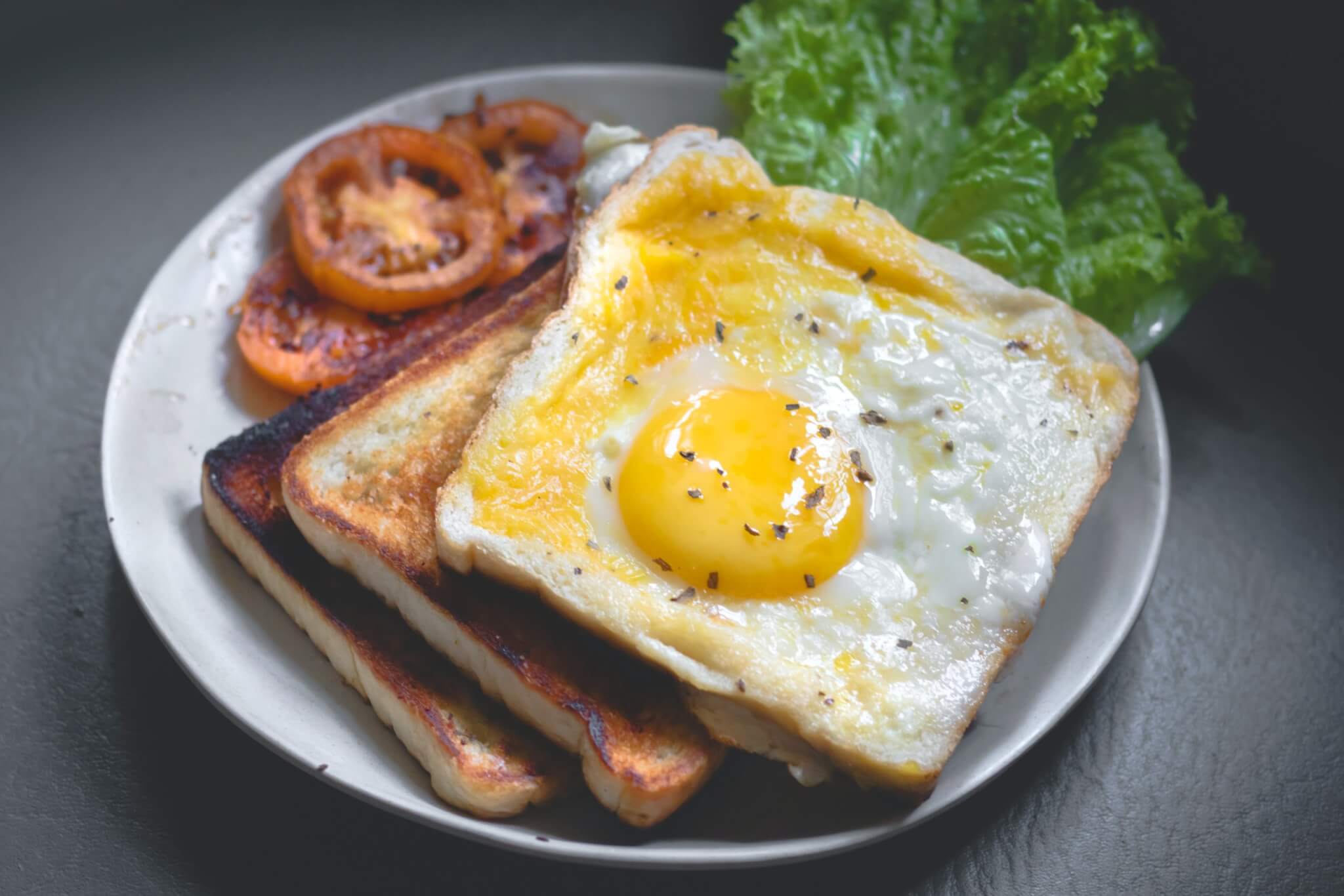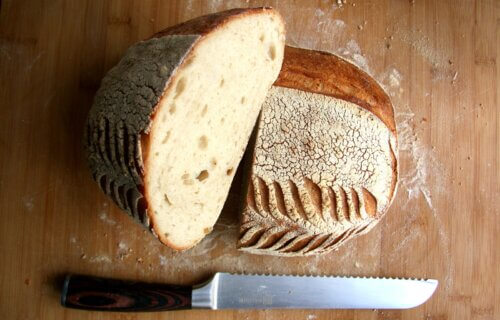Carbs, especially bread, have been villainized for decades. Wellness gurus say that they make you fat, cause diabetes, and ruin your gut. These hyperbolic views have made it so that people fear bread and other high-carb foods, especially if they want to lose weight. It gets people thinking that it’s impossible to eat these foods if they want to achieve their health goals, but that isn’t true. Eating bread does not inherently lead to weight gain, so let’s talk about why.
All breads are processed. Some are minimally processed, while others are highly processed. White bread, which is what makes up the majority of bread consumption for the average American, is mainly rich in carbohydrates and low in fiber, protein, and micronutrients.
This type of bread goes through a refinement process that turns the grain white by removing the parts that contain the fiber and other nutrients. As a result, white bread is much more likely to spike your blood sugar quickly. Whole-grain bread has been found to help promote more stable blood sugar levels because of the fiber that remains intact. You are more likely to overeat when blood sugar levels are high, thus making it more likely you’ll gain weight and develop insulin resistance. However, not all breads are equal. The villainization of bread has become an overgeneralized talking point that misses needed nuance.
Can you eat bread and lose weight?
Yes. It’s important to know that any food can hinder weight loss if you are consistently consuming a caloric surplus. However, you should be mindful of the types of bread you eat and how you eat them.
Eating bread with at least three grams of fiber or more can help prevent swings in blood sugar when you eat it because fiber helps your body digest carbs at a slower rate. Eating fiber-rich bread means you’re more likely to stay fuller for longer, meaning you are less likely to reach for more snacks than you need throughout the day.
Additionally, it’s important to pay attention to how you are building your meals that include bread. Just having some white (or even whole-grain) bread with some butter on it and rushing out the door in the morning is a recipe for becoming hungry in another hour or two. Try to pair your bread with sources of protein, fiber, and fat.
A perfect breakfast sandwich would be:
- Two slices of whole grain bread toasted
- 1 scrambled egg mixed with 1 egg white cooked in your favorite seasonings
- A quarter of an avocado spread onto one side of toast
The macronutrients will vary depending on the type of bread you use, but this can easily be a breakfast that keeps you full well until lunch, helps maintain healthy blood sugar levels, and keeps you on track to your goals.

Another valuable thing to consider is how often you are eating bread. For many people, bread is one of their favorite foods (how could it not be?). If this sounds like you, you might be overeating it and therefore struggling with weight loss. Eating bread across multiple meals may not be the most mindful strategy, so take a look at your intake trends and try to adjust accordingly. Maybe that looks like eating a meal with bread once per day, or every few days, depending on what is feasible for you.
The problem is not the bread itself — it’s the overconsumption of it. Bread on its own is not going to stop you from losing weight. Instead, focus on the frequency at which you eat bread, the types you choose to eat, and how you build your meals that have bread in them. Finally, whenever you can, try to pair it with protein, fiber, and healthy fats to create a more balanced meal.
You might also be interested in:
- Best Fast Food Breakfast Sandwiches: Top 5 Drive-Thru Bites, According To Experts
- Sourdough may be the key to better gluten-free bread
- No, brown rice is not healthier than white rice

